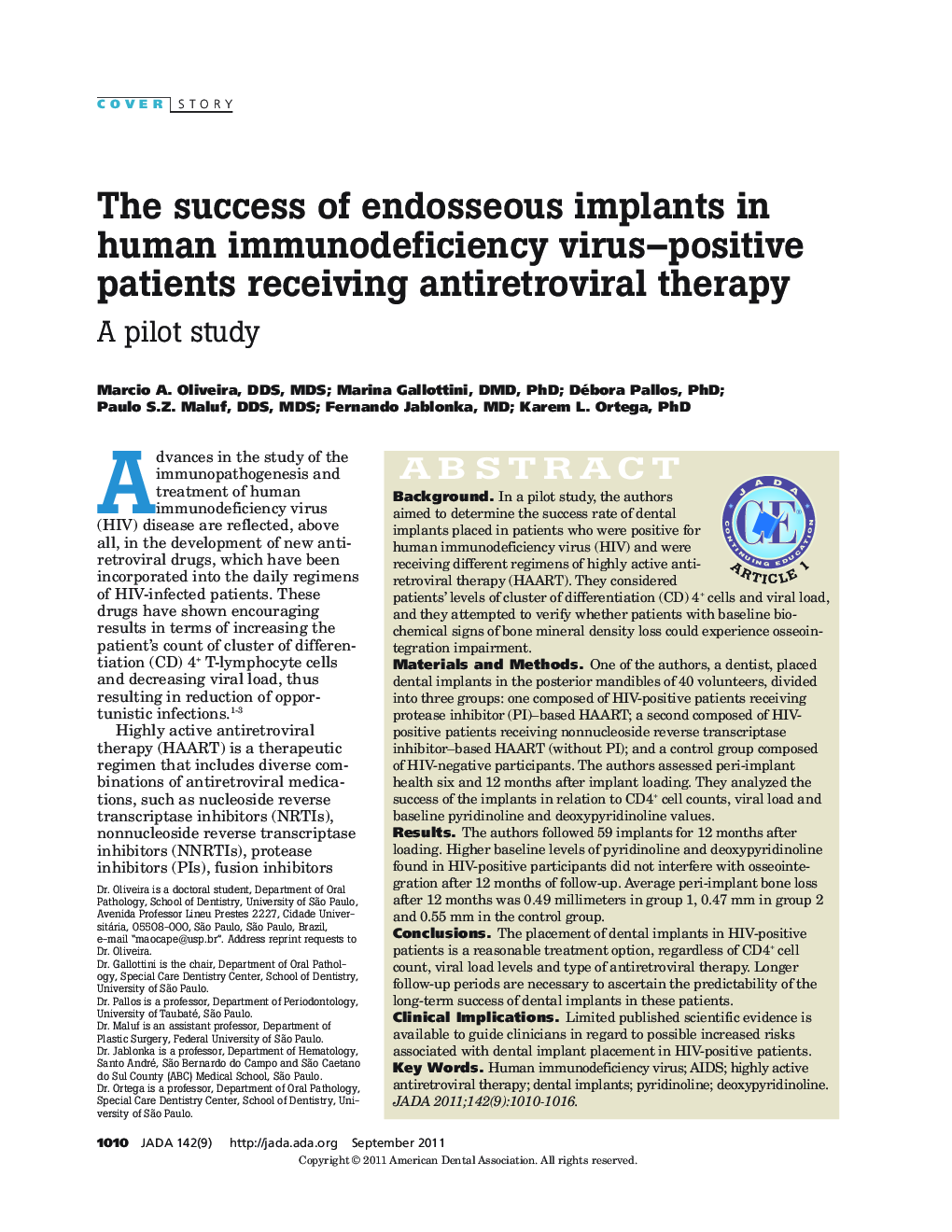| Article ID | Journal | Published Year | Pages | File Type |
|---|---|---|---|---|
| 3138198 | The Journal of the American Dental Association | 2011 | 7 Pages |
ABSTRACTBackgroundIn a pilot study, the authors aimed to determine the success rate of dental implants placed in patients who were positive for human immunodeficiency virus (HIV) and were receiving different regimens of highly active anti-retroviral therapy (HAART). They considered patients' levels of cluster of differentiation (CD) 4+ cells and viral load, and they attempted to verify whether patients with baseline biochemical signs of bone mineral density loss could experience osseointegration impairment.Materials and MethodsOne of the authors, a dentist, placed dental implants in the posterior mandibles of 40 volunteers, divided into three groups: one composed of HIV-positive patients receiving protease inhibitor (PI)–based HAART; a second composed of HIV-positive patients receiving nonnucleoside reverse transcriptase inhibitor–based HAART (without PI); and a control group composed of HIV-negative participants. The authors assessed peri-implant health six and 12 months after implant loading. They analyzed the success of the implants in relation to CD4+ cell counts, viral load and baseline pyridinoline and deoxypyridinoline values.ResultsThe authors followed 59 implants for 12 months after loading. Higher baseline levels of pyridinoline and deoxypyridinoline found in HIV-positive participants did not interfere with osseointegration after 12 months of follow-up. Average peri-implant bone loss after 12 months was 0.49 millimeters in group 1, 0.47 mm in group 2 and 0.55 mm in the control group.ConclusionsThe placement of dental implants in HIV-positive patients is a reasonable treatment option, regardless of CD4+ cell count, viral load levels and type of antiretroviral therapy. Longer follow-up periods are necessary to ascertain the predictability of the long-term success of dental implants in these patients.Clinical ImplicationsLimited published scientific evidence is available to guide clinicians in regard to possible increased risks associated with dental implant placement in HIV-positive patients.
